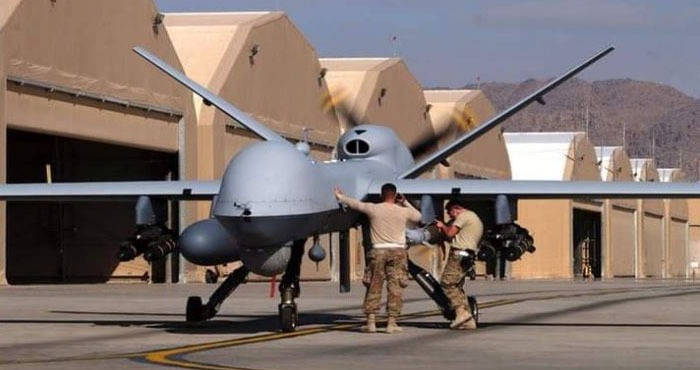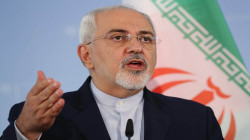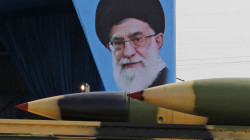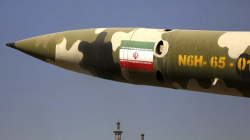Inside a U.S. Navy Maritime Drone Operation Aimed at Iran

Shafaq News/ The U.S. Navy is working with Israel, Saudi Arabia and other Middle Eastern nations to build a network of unmanned drones as it seeks to constrain Iran’s military in the region—a program the Pentagon hopes will be a model for operations around the world.
A ship operated by Iran’s Islamic Revolutionary Guard Corps attempted to seize an American maritime drone—equipped with cameras, radar and other sensors—but abandoned that effort on Tuesday when a U.S. warship and helicopter approached, U.S. officials said.
U.S. officers declined to disclose the number of aerial and maritime drones deployed by the U.S. and its allies or to give details about where and how they are used, saying that information is classified. But they said the unmanned vessels and aircraft are giving them better visibility over the region’s waters.
By next summer, the Navy said, it expects to have 100 small surveillance drones—contributed by various countries—operating from the Suez Canal in Egypt to waters off the Iranian coast and feeding information to a command center in Bahrain, headquarters of the U.S. Fifth Fleet.
“I think we are truly on the cusp of an unmanned technological revolution,” said Capt. Michael Brasseur, who heads the U.S. Navy task force working to build the drone fleet in the Middle East.
The drone initiative, now in its sixth month, is part of a burgeoning cooperative relationship among the U.S., Israel and Gulf nations following the Abraham Accords. It mirrors another U.S.-led effort to unite Israel and its Gulf neighbors to create a regional air-defense network.
From the Robotic Operation Center here in Manama, U.S. Navy personnel and private contractors monitor the drones’ progress. Video screens display blinking red alerts when the drones identify “dark targets” or suspected threats.
The drones—some of which can float at sea for up to six months—can send back detailed images and other data. Analysts review the images and try to determine what they show.
Vice Adm. Brad Cooper, the commander spearheading the effort, said the fleet has proven its value by detecting activity such as a Chinese naval ship moving through the area, suspicious ship-to-ship transfers and vessels using electronic trackers to disguise their identities.
“We’ve been able to detect activity that we simply did not know was previously happening,” he said.
The drones now being tested are unarmed. But defense analysts expect the Navy to move toward equipping some with weapons in the future—something that would likely prompt intense debate.
U.S. lawmakers have raised concerns about Navy plans to build larger unmanned ships, a program that could cost billions of dollars. And the military still has to determine how to make use of smaller drones, protect them from attack and act on the information they transmit.
The U.S. drone operations come as there is mounting concern about Iran’s expanding influence in one of the world’s most important economic thoroughfares. Tehran has deployed ships and submarines equipped with aerial drones and has warned it is prepared to use them.
“If the enemies make a mistake, these drones will present them with a regrettable response,” Abdolrahim Mousavi, an Iranian army commander, told reporters during a recent visit by President Biden to the region.
The U.S. accused Iran of using drones to target an Israeli-affiliated merchant tanker off the coast of Iran last year in an attack that killed two crew members. Iran said it didn’t carry out the strike.
In July, Israeli Defense Minister Benny Gantz said Iran’s forces were “a direct threat to international trade, energy supply and the global economy.”
According to people familiar with the operations, Israel last year struck an Iranian cargo ship suspected of spying in the Red Sea. The explosion crippled the ship and Iran sent a replacement.
When an Iranian ship was discovered Tuesday towing one of the U.S. Navy’s 23-foot Saildrones that was conducting surveillance in the central Persian Gulf, U.S. forces warned the vessel that the drone was U.S. property. The Iranians dropped the tow line and eventually left the area, they said.
On Wednesday, the IRGC Navy called the U.S. military’s version of the incident “ridiculous,” according to Iranian state television. The IRGC said it took control of the U.S. vessel to prevent “unsafe sailing” and decided to release it after warning the U.S. Navy to not let such “illegal behavior” happen again.
Earlier this year, the U.S. created a new military task force to focus on the Red Sea. Israel, which established diplomatic relations with Bahrain in 2020 as part of the U.S.-brokered Abraham Accords, has, for the first time, a military adviser working out of the Fifth Fleet headquarters in Manama.
The U.S. Navy is testing a range of unmanned craft, including one that looks like a speedboat and can reach speeds of nearly 90 miles an hour. It is also working with Predator-style aerial drones and the Saildrone, which can stay at sea for six months.
The true test of the drones will be whether they provide intelligence that leads to action—such as the seizure of contraband cargo.
“Just watching alone might limit Iran’s behavior,” said Stacie Pettyjohn, director of the Defense Program at the Center for a New American Security. “But if they realize that they are not going to follow through and do anything, it may not be much of a deterrent.”
(Wall Street Journal)





